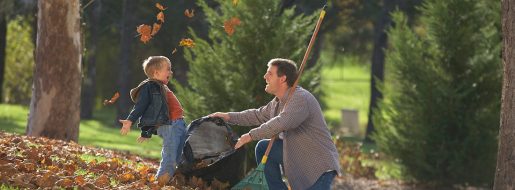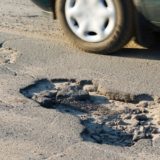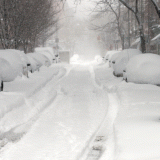
Don’t burn
Many local governments are banning leaves and other yard trimmings from landfills, and you may be tempted to burn the leaves in your yard. Leaf burning, however, becomes a fire hazard that can lead to air pollution and health problems. The open burning of leaves produces particulate matter and hydrocarbons that contain toxic, irritant and carcinogenic compounds, such as carbon monoxide. Burning leaves is not recommended by the Environmental Protection Agency (EPA)—nor is it legal in most states.
Do bag
If you’ve got a lot of time and a strong back (who has either, right?), bagging leaves is one option. This moderate physical activity helps build upper-body and core strength and gives you the opportunity to get outside for some fresh fall air. Remember, sticks, rocks, pine cones, limbs and other debris should not be mixed with loose leaves. Also, check with your municipality or borough to see what, if any, weight limit or bag color has been specified for leaf-filled bags, Then, when they’re ready to go, put them at the curb on your regular trash collection day or as directed.
Try composting
Composting is an environmentally-friendly form of recycling that helps soil retain moisture and nutrients and increase fertility. When leaves are composted along with nitrogen-filled grass clippings, the resulting compost becomes organic fertilizer or mulch for flowerbeds, gardens or around shrubs. The EPA’s Web site offers a free detailed guide on how to create your own compost pile in your backyard. The most important thing to note is what can and cannot be composted. Stay away from meat trimmings and bones—they may attract pests.
What you need to know about the law
Laws for leaf disposal vary depending on where you live. Visit your city’s Web site or call your local public works department for more information.




















